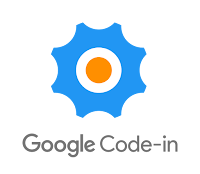Google Code-in is our annual contest that gives students age 13 to 17 experience in computer science through contributions to open source projects. This blog post is the third installment in our series reflecting on the experiences of
Google Code-in 2015 grand prize winners. Be sure to check out the
first and
second posts in the series, too.
In this post we look at the stories of three more Google Code-in (GCI) grand prize winners. Our grand prize winners come from a pool of
980 students from 65 countries who, all told, completed 4,776 tasks for 14 open source projects.
We were lucky enough to host many of these extraordinary young coders at Google HQ for a few days this summer. Over that time, we learned more about where they came from, what they gained by participating in GCI and what they plan to do as new members of the open source community.
 |
| Google Code-in 2015 Grand Prize Winners explore the SF Bay Area in this immersive Google Street View display with fellow open source program managers Stephanie Taylor and Cat Allman who run GCI. |
Our first story today is that of Břetislav Hájek from the Czech Republic, who chose to work with the
OpenMRS project because he sees their work as important. OpenMRS is an open source medical record system that improves healthcare delivery in resource-constrained regions.
Břetislav got into computer science through web development, so he started by working on tasks related to HTML and CSS. This gave him confidence to take on more challenging tasks. His favorite task was creating a web application for searching through patients. While he didn’t find it hard, he learned a lot and was proud to have made something useful. Reflecting on Google Code-in, Břetislav said:
“That's the thing I like about GCI. I always treat tasks as opportunities to learn something new. And the learning is more entertaining since I work on real problems.”IRC communication proved to be an important part of Břetislav’s success. Other students were there and tried to help each other out as best they could, and there were always mentors available to help guide them. He enjoyed the friendly environment. The community motivated him to work harder and try new things. In the end, Břetislav was glad to have participated and is motivated to continue his work.
Next we have Vicente Bermudez from Uruguay who discovered Google Code-in through
a story in the local news celebrating a Uruguayan grand prize winner from a previous year. Like Břetislav, Vicente chose to work on the OpenMRS project because the cause spoke to him.
He got into programming through his love of video games and his desire to create his own. He hadn’t heard about programming before but initial research piqued his interest. Following his curiosity, he learned Java and expanded his knowledge from there. Conveniently, much of OpenMRS is built with Java!
The task-based structure worked well for Vicente. He was unsure of some tasks, recognizing that he didn’t know much about what they required. For instance, he hesitated to take on one that involved creating
a Windows Phone app because he had never created a mobile app. But he persisted and, five days later, he had completed it and learned a lot about mobile development.
It surprised Vicente how much he learned in such a short time span. He had this to say:
“During the contest I gained knowledge in a variety of fields such as programming, testing, video editing, and graphic design. The mentors encouraged us to think about quality instead of quantity, and I learned a lot from that.”Vicente loved his Google Code-in experience and plans to continue contributing to open source projects, especially OpenMRS.
The last student story we’ll share today is that of Anesu Mafuvadze, a student from the US who worked with the
Sustainable Computing Research Group (SCoRe). His introduction to computer science came through robotics in one of his high school classes which used a language similar to C++.
Anesu was thrilled by the experience of bringing the robots to life with code. He described his introduction this way:
“The more I programmed the more captivated I became; I loved how easily I could convert my wildest ideas into fully functioning programs; I loved the thrill of working in an environment that demands minute precision; above all, I loved creating programs that other people found useful.”Online documentation and YouTube tutorials fueled Anesu’s education for several years as he picked up multiple languages and began participating in programming contests. But he knew something was missing, Anesu lacked real world coding experience and had never collaborated with others. As such, he didn’t pay much attention to the readability of his code, wasn’t aware of version control, didn’t write extensive tests and had never built something for the common good.
Enter Google Code-in. Working with mentors helped Anesu deliver quality and building open source software required him to learn collaboration tools and value readability. The contest also gave him an opportunity to build on skills that he hadn’t developed, such as web development. Anesu says the experience made him a better programmer and that the introduction to open source has motivated him to use his skills on projects that benefit society.
Thank you to Břetislav, Vicente and Anesu for their hard work contributing to open source projects and for sharing their stories with us. We have one more blog post coming with more student stories so stay tuned!
By Josh Simmons, Open Source Programs Office






